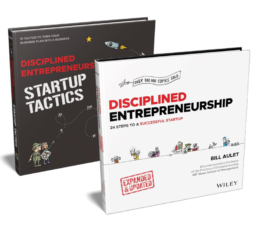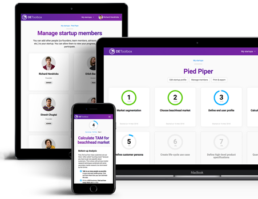Step 8
Quantified Value Proposition
At this stage in the process, you should now be feeling pretty good. You know who your customer is, and you have an overview of what product you’d like to build and what value it will deliver.
You have made great progress, but you will need to refine all of this a great deal more to develop a competitive advantage as well as a go-to-market strategy to build and launch your product. Regardless, completing this step is still an important milestone—congratulations!
Videos
Worksheets
Examples
Content will be published as it becomes available.
Topics
Process Guide
Use Figure 8.1 as your guide here. Start by taking your Persona’s #1 priority from the Persona Profile worksheet. Talk with the Persona about how to measure that priority quantitatively, and what units to measure it in. For instance, if your Persona’s top priority is saving money, then your value proposition will likely be expressed as dollars, or dollars per time period (such as dollars saved over the course of a year). If it is reliability, your measurement might be a percentage rate of failure, errors per thousand products, downtime per month, or a similar measurement.
Next, take that quantitative measurement and map out how the Persona currently operates in the “as-is state.” Interview the Persona to get this information, and use the Persona’s own words when describing the as-is state. Use the space later on in this chapter to take notes about how the Persona describes the as-is state. Then, use the top half of the Quantified Value Proposition worksheet to visually break it down into concrete steps or stages.
Once you have mapped out the as-is state, review it with the Persona to make sure you clearly understand how things currently stand, and that the Persona agrees with the terminology and the data. If the Persona does not understand the as-is state, you will have trouble demonstrating how your product can benefit the Persona.
Next, define the possible state in the same terms as you just did for the as-is state with your proposed new product. Explicitly show how your proposed product will better satisfy the Persona’s #1 priority in detail. Express the possible state by using the same units with which you measured the Persona’s top priority.
Calculating the possible state will be a challenge because you have only just begun to settle on what the product will be. But this exercise will help you better understand what product your customer wants you to build.
A few tips:
- Don’t overpromise the benefit your product will provide in the possible state. You want to “underpromise” and “over-deliver” because as a new startup, you have little to no credibility, so all you have are your promises. You do not want your customers to lose trust in what you say or for competitors to seize on your every misstep and point out your flaws. And in a startup, rarely do things go as planned, so you want some buffer for slippages and surprises. If your Persona is not excited by your conservative value proposition and is only excited by a more aggressive set of promises, that should signal danger to you.
- Sometimes, the Persona has multiple top priorities that are intertwined. See the example for InTouch, where the Persona, a pregnant mother-to-be, wanted reassurance that her fetus was healthy and wanted to establish intimacy with her unborn child. The InTouch product was meant to address both priorities, as the priorities were similar enough in theme that one product could easily satisfy both priorities without losing clarity on the product’s mission.
Books
Content will be published as it becomes available.
Other Resources
Content will be published as it becomes available.
The Disciplined Entrepreneurship Toolbox
Stay ahead by using the 24 steps together with your team, mentors, and investors.
The books
This methodology with 24 steps and 15 tactics was created at MIT to help you translate your technology or idea into innovative new products. The books were designed for first-time and repeat entrepreneurs so that they can build great ventures.

